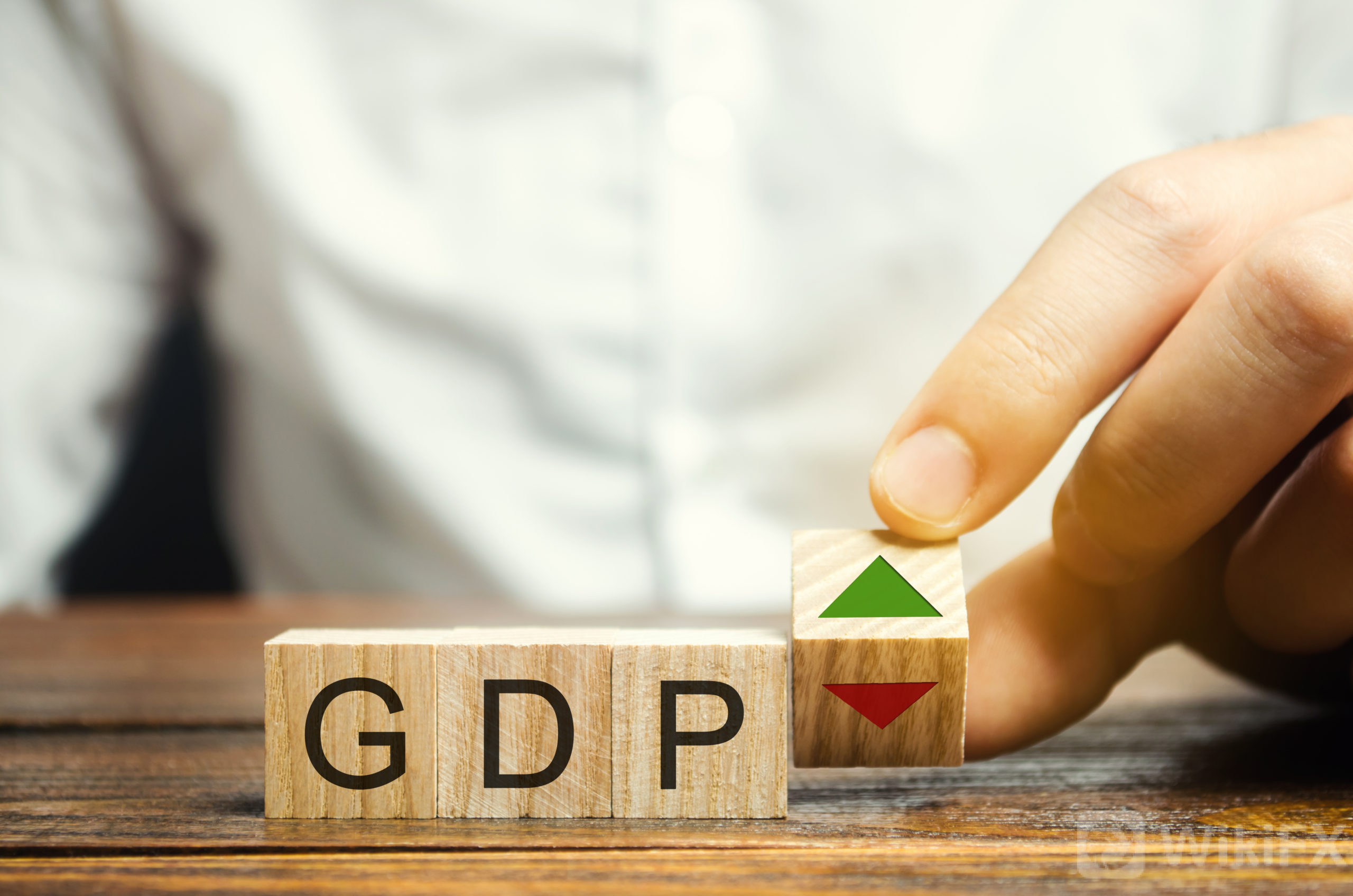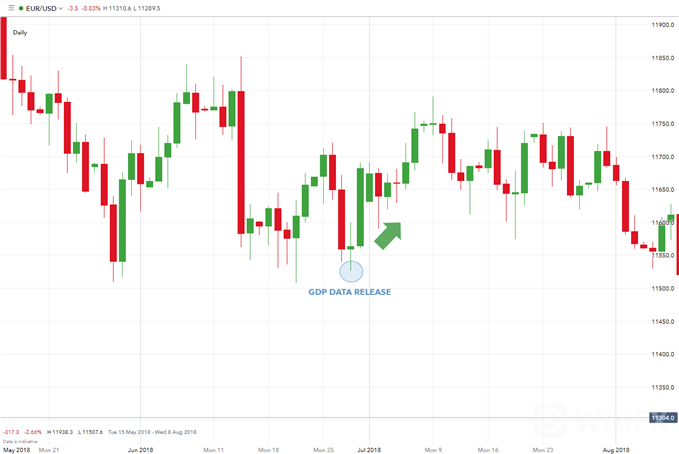
GDP (Gross Domestic Product) economic data is deemed highly significant in the forex market. GDP figures are used as an indicator by fundamentalists to gauge the overall healthand potential growth of a country.Consequently, greater volatility in the forex market is closely observed during the GDP release.
WHAT FOREX TRADERS NEED TO KNOW ABOUT GDP
What is GDP?
Developed in 1934 by Simon Kuznets, the Gross Domestic Product (GDP) measures the output and production of finished goods in a countrys economy. Usually, GDP is measured in three different time periods: monthly, quarterly and annually. This enables economists and traders to get an accurate picture of the overall health of the economy.
There are many approaches to calculating GDP, however, the US Bureau of Economic Analysis uses the “Expenditure Approach” using the formula:
GDP = Consumption (C) + Investment (I) + Government Spending (G) + (Exports (X) – Imports (M))
Understanding the relationship between GDP and the forex market
The general rule of thumb when looking at GDP data is looking at whether figures beat or fall below estimates (see relevant charts below):
-
A lower than projected GDP reading will likely result in a sell off of the domestic currency relative to other currencies (USD depreciating against EUR).
EUR/USD chart: Low GDP data release

-
A higher than projected GDP reading will tend to strengthen the underlying currency versus other currencies (USD appreciating against EUR).
EUR/USD chart: High GDP data release

GDP reports do not always have the same or expected effect on currencies. This is important to keep in mind before committing to a trade. Often, GDP figures are already fully/partially priced into the market meaning that the market may not react as anticipated once GDP figures are released.
ANALYSING GDP DATA TO INFORM CURRENCY TRADING DECISIONS
GDP, Inflation and Interest Rates
The advance release of GDP is four weeks after the quarter ends while the final release happens three months after the quarter ends. Both are released by the Bureau of Economic Analysis (BEA) at 08:30 ET. Typically, investors are looking for US GDP to grow between 2.5% to 3.5% per year.
Without the specter of inflation in a moderately growing economy, interest rates can be maintained around 3%. However, a reading above 6% GDP would show that the US economy is endanger of overheating which can, in turn, spark inflation fears.
Consequently, the Federal Reserve may have to raise interest rates to curb inflation and put the ‘brakes’ on an overheating economy. Maintaining price stability is one of the jobs of the Federal Reserve. GDP must stay in a ‘goldilocks range’: not too hot and not too cold.
GDP should not be high enough to trigger inflation or too low where it could lead to recession. A recession is defined by two consecutive negative quarters of GDP growth. The GDP ‘sweet spot’ varies from one country to another. For example, China has had GDP in double digits.
Forex traders are most interested in GDP as it is a complete health report card for a country‘s economy. A country is ’rewarded for a high GDP with a higher value of their currency. There is usually a positive expectance for future interest rate hikes because strong economies tend to get stronger creating higher inflation. This, in turn, leads to a central bank raising rates to slow growth and to contain the growing specter of inflation.
On the other hand, a country with weak GDP has a drastically reduced interest rate hike expectation. In fact, the central bank of a country that has two consecutive quarters of negative GDP may even choose to stimulate their economy by cutting interest rates.
TRADING CURRENCY PAIRS USING GDP DATA
Quarter-on-quarter figures tend to produce much more variable changes in the overall trend – e.g. Positive GDP figures beating estimates QoQ may be fleeting when taking into consideration year-on-year (YoY) data. YoY data allows for a broader perspective which could potentially highlight an overall trend.
The chart below shows a longer time frame EUR/USD view as seen in Chart 2 above. This chart expresses the variation in short term QoQ data against the longer-term YoY trend.

Leave a Reply